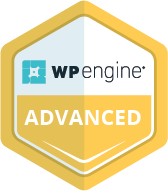What’s the purpose of your homepage?
When working through homepage messaging and design with our clients, one thing that really helps is a discussion about what the purpose of their homepage really is–and more specifically–who it is for.
Spoiler alert: It’s not for returning customers; they will direct themselves to the pages they need through your top menu or header. By contrast, a returning customer may only spend seconds on your homepage before directing themselves elsewhere.
That means that the primary homepage audience is new customers—people who may only be vaguely acquainted with your brand, at this point. To keep them engaged, you’ll need to do seven main things with your homepage.
- Grab their attention. An eye-catching hero image and engaging headline will encourage people to keep scrolling.
- Let them know they are in the right place. You solve exactly the sorts of problems they’ve been having. Let them know that right away.
- Tell them (a little) about yourself. You don’t need a whole “About” page’s worth of info–but a little information about why you’re an authority in this space, or why you started your business is helpful.
- Make it easy for them to take the next step. List out the steps they need to take to start working with you–and make their first step as clear as possible with engaging, obvious calls to action.
- Include testimonials. I could write a whole blog post on testimonials, but the homepage is a great place to house a handful of these, if you have them.
- Give them the opportunity to stay in touch. They may not be ready to buy your product or engage with your service right away. This is where lead magnets come in. A lead magnet is something that would be of value to your ideal customer. If you’re a product-based business, it might be a discount code for 10% off their first purchase. If you’re a service-based business, it might be a PDF where you give away 10 amazing tips that your people would love to know. By using a lead magnet in exchange for an email address–you’ll have a warm lead in your email list who will likely think of you the next time they need the types of things you offer. Or, if you are not ready to collect email addresses yet, you could encourage them to follow you on social media.
- Fill your footer. Most people assume that everything should go on the menu. Not so. Put only your absolute top priority stuff up there. A cluttered top menu makes it harder for people to decide where to go. Besides, people know to go to the footer if they can’t find what they are looking for in the menu. Stuff like Contact and Careers—they need to be moved down.
You will be tempted to include a lot of information on the homepage, but I urge you to keep the word count low. The higher up on the homepage you are, the more scannable your content needs to be. The farther down a person scrolls, the more invested they are, and the more likely they are to read a little more.
I mean, be honest: most of you scanned this blog post before committing to reading the whole thing, didn’t you? Be respectful of peoples’ time and brain power by writing clear, concise homepage content—this gives them the opportunity to get to know you, and in turn, be able to trust you.
If you need help developing your messaging, you are interested in a website messaging audit, get in touch with me and we’ll start that ball rolling.

